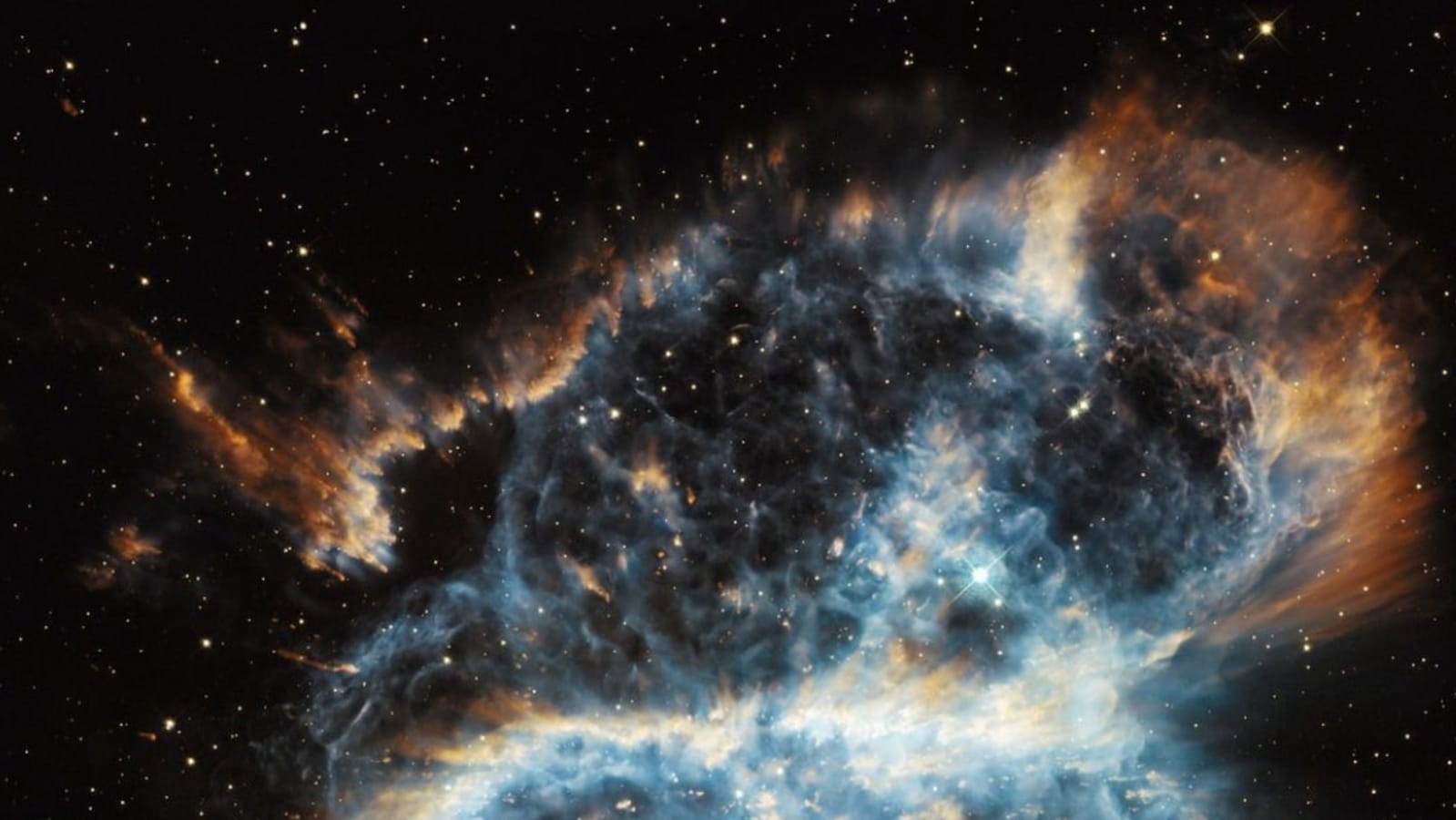The various motions of celestial bodies and the cosmos, including the planets, their rotations in different planes and at different periods, give rise to a number of phenomena. Remarkable astronomical phenomena, such as nebulae and solar and lunar eclipses, give rise to a wide range of images. When observed from above, these events can be impressive and fascinating to behold.
Space agencies like NASA have been sharing images of these astronomical events over and over again.
Here are the five best images captured by NASA:
NASA has titled this image “The Moon Dressed as Saturn.” While the photo may show the Moon a bit larger than usual, it is actually not.
The Moon is in a first quarter phase, with much of its surface illuminated by reflected light from Earth, known as the Da Vinci glow. The bright crescent Moon is illuminated directly by the Sun from below, indicating that the Sun must be below the horizon, suggesting the image was taken before sunrise.
This intriguing photograph was captured on December 24, 2019, just two days before the Moon moved in front of the Sun, causing a solar eclipse. In the foreground, the lights of small Guatemalan villages are seen with the massive Pacaya volcano as a backdrop, according to NASA.
The image shows a supermoon, which rose with the Temple of Poseidon in Greece as a backdrop. This supermoon was the first in a series of four supermoons for the year 2024. The third A supermoon is expected in September.
Supermoons appear slightly larger and brighter than typical full moons because they reach their full phase when they are a little closer to Earth — closer than 90 percent of all full moons. The supermoon pictured was also considered a blue moon under the definition that it is the third of four full moons to occur in a single season.
Blue moons are not actually blue. The second full moon in a month is often called a blue moon.
We have often heard about solar and lunar eclipseswhere the sun and moon are often obscured by certain astronomical phenomena. This NASA image captures a rare moment when the moon eclipsed Saturn.
Just days ago, an eclipse of Saturn, more formally known as an occultation, was visible across a wide region of Earth, from Peru and the Atlantic Ocean to Italy. The color image shown is a digital composite of the clearest photographs taken during the event, with adjustments made for color balance and brightness to highlight both the relatively dim Saturn and the much brighter Moon, NASA said.
The exposure was captured from Breda, Catalonia, Spain, just before the occultation began. Eclipses of Saturn caused by the Moon are expected to occur monthly for the rest of the year. However, each one will only be visible to those with clear skies and the right location on Earth.
This NASA image shows a “star factory” called Messier 17, which lies about 5,500 light-years away in the constellation rich in nebulae Sagittarius.
At that distance, this 1.5-degree-wide field of view would span about 150 light-years. In the sharp color composite image, faint details of the region’s gas and dust clouds are highlighted with narrowband imaging data against a background of the Milky Way’s central stars.
According to NASA, stellar winds and energetic radiation from hot, massive stars that have already formed from M17’s cosmic gas and dust have slowly eroded away the remaining interstellar material. This produced the nebula’s cavernous appearance and wavy shapes seen in the image. M17, a popular stop on telescopic voyages into the cosmos, is also known as the Omega Nebula or the Swan Nebula.
On August 11, 2024, a Rocket Lab Electron rocket was launched from a rotating planet, carrying a small satellite on a mission called ‘A Sky Full of SAR’ (Synthetic Aperture Radar Satellites).
The rocket blasted off into low Earth orbit from the Mahia Peninsula on New Zealand’s North Island. The NASA image captures the fiery trail of Electron’s graceful launch trajectory heading eastward, with the sea and southern sky as a backdrop.
The photograph, created from 50 consecutive frames taken over 2.5 hours, was captured with the camera attached to a tripod. The target was directly at the South Celestial Pole, the extension of Earth’s axis of rotation into space, NASA said. Although there are no bright stars at this location in the Southern Hemisphere’s night sky, the South Celestial Pole is identifiable as the center of the trail of arcs that fill the view of the sky.
Catch all the Business News, Market News, Breaking News Events and Latest news Updates in Live Mint. Download Mint News App for daily market updates.
FurtherLess
Disclaimer:
The information contained in this post is for general information purposes only. We make no representations or warranties of any kind, express or implied, about the completeness, accuracy, reliability, suitability or availability with respect to the website or the information, products, services, or related graphics contained on the post for any purpose.
We respect the intellectual property rights of content creators. If you are the owner of any material featured on our website and have concerns about its use, please contact us. We are committed to addressing any copyright issues promptly and will remove any material within 2 days of receiving a request from the rightful owner.

